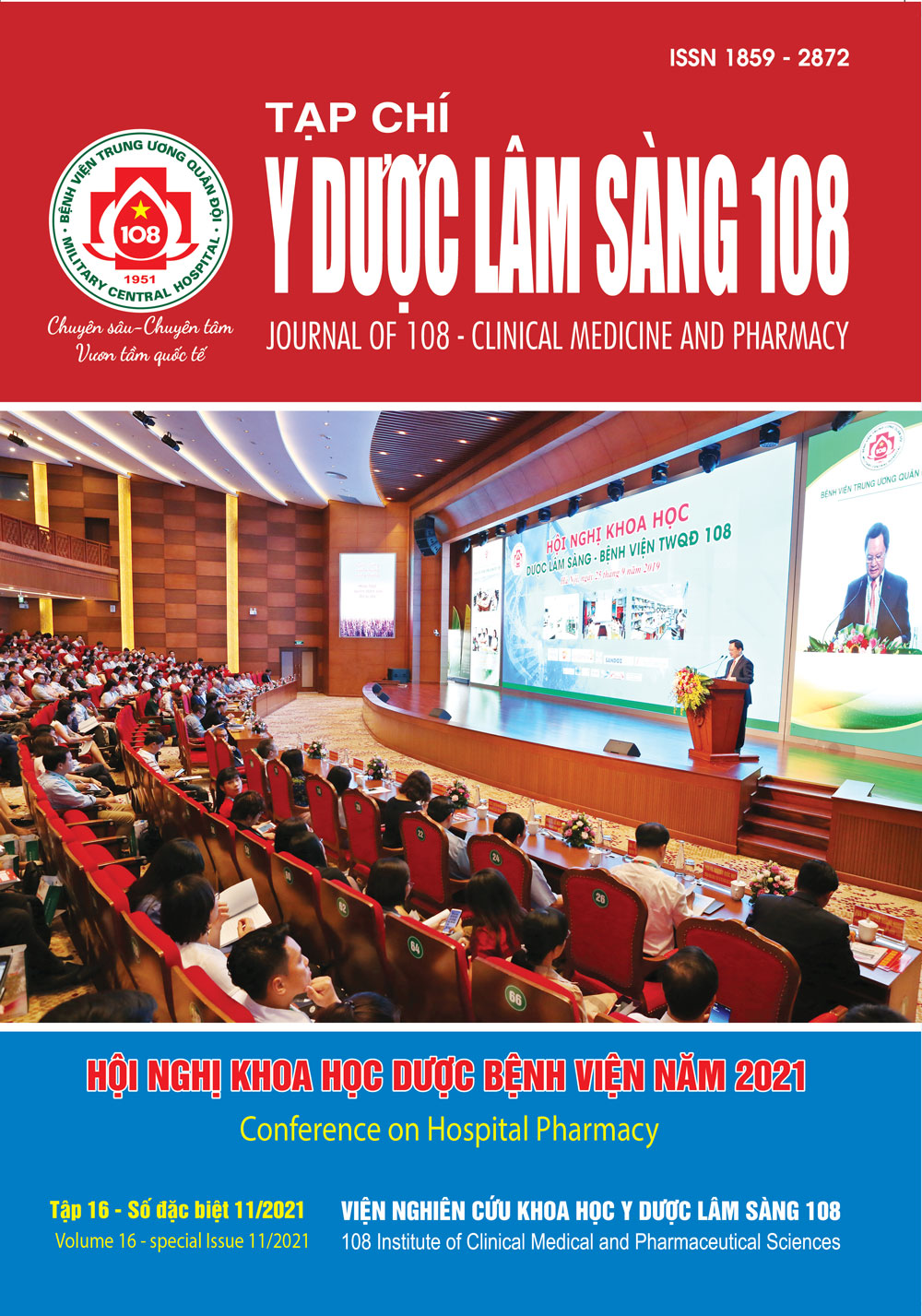An analysis of linezolid utilization at Thanh Nhan Hospital
Main Article Content
Keywords
Abstract
Objective: To investigate the consumption of linezolid and assess the appropriateness of linezolid indications at Thanh Nhan Hospital. Subject and method: Retrospective study of DDDs per 100 bed-days over a 5-year period (from 2016 to 2020) and medical records of all inpatients with indications to use linezolid from January to June 2020 satisfying the inclusion and exclusion criteria. The appropriateness of indications was evaluated based on predetermined criteria. Result: The consumption of linezolid significantly increased during the study period, from 0.13 DDDs (2016) to 0.57 DDDs (2020) (S = 558, p<0,001). Over a six-month period, a total of 113 patients was included. The majority of patients used linezolid in empiric regimens (92.9%) within label-use for linezolid (82.3%). The percentage of patients prescribed inappropriate antibiotics was 25.7%, mainly due to unsatisfactory use as an alternative to vancomycin. The most commonly reported adverse events were thrombocytopenia (32.1%) and anemia (13.9%). Conclusion: Consumption of linezolid increased gradually while a significant rate of inappropriate indication. It is, therefore, necessary to implement hospital protocol for linezolid to enhance rational use of this highly-reserved antibiotic.
Article Details
References
2. Đoàn Thị Phương, Lê Vân Anh và cộng sự (2016) Khảo sát sử dụng kháng sinh linezolid tại Bệnh viện Bạch Mai năm 2015. Nghiên cứu Dược và Thông tin Thuốc, 7(4-5), tr. 184-88.
3. Choi GW, Lee JY et al (2019) Risk factors for linezolid-induced thrombocytopenia in patients without haemato-oncologic diseases. Basic Clin Pharmacol Toxicol 124(2): 228-234.
4. Dentan C, Forestier E et al (2017) Assessment of linezolid prescriptions in three French hospitals. Eur J Clin Microbiol Infect Dis 36(7): 1133-1141.
5. Flamm RK, Mendes RE et al (2016) Linezolid Surveillance Results for the United States (LEADER Surveillance Program 2014). Antimicrob Agents Chemother 60(4): 2273-80.
6. Guillard P, de La Blanchardiere A et al (2014) Antimicrobial stewardship and linezolid. Int J Clin Pharm 36(5): 1059-68.
7. Lai CC, Chu CC et al (2015) Correlation between antimicrobial consumption and incidence of health-care-associated infections due to methicillin-resistant Staphylococcus aureus and vancomycin-resistant enterococci at a university hospital in Taiwan from 2000 to 2010. J Microbiol Immunol Infect 48(4): 431-436.
8. Methodology WHO Collaborating Centre for Drug Statistic (2021) ATC/DDD Index 2021. Retrieved 19/6, from http://www.whocc.no.
9. Meyer E, Schwab F et al (2011) Increasing consumption of MRSA-active drugs without increasing MRSA in German ICUs. Intensive Care Med 37(10): 1628-1632.
10. Mori N, Kamimura Y et al (2018) Comparative analysis of lactic acidosis induced by linezolid and vancomycin therapy using cohort and case-control studies of incidence and associated risk factors. Eur J Clin Pharmacol 74(4): 405-411.
11. Pharmacy Department Policies and Procedures (2020) Stanford antimicrobial safety and sustainability program antimicrobial restriction policy. Stanford Health Care.
12. Rubinstein E, Isturiz R et al (2003) Worldwide assessment of linezolid's clinical safety and tolerability: Comparator-controlled phase III studies. Antimicrob Agents Chemother 47(6): 1824-1831.
 ISSN: 1859 - 2872
ISSN: 1859 - 2872
